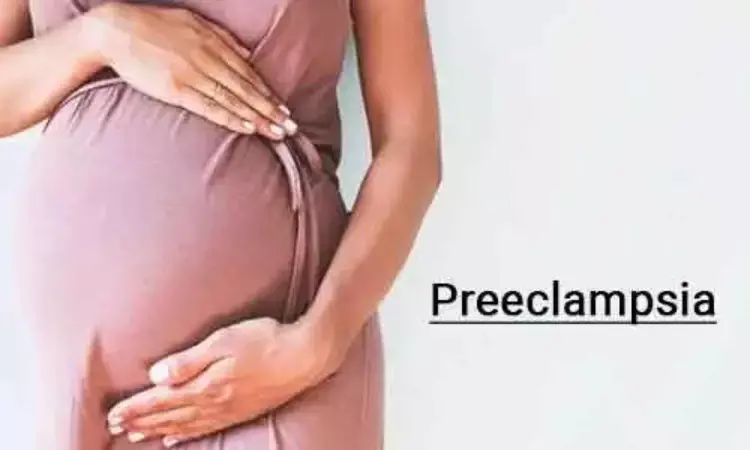- Home
- Medical news & Guidelines
- Anesthesiology
- Cardiology and CTVS
- Critical Care
- Dentistry
- Dermatology
- Diabetes and Endocrinology
- ENT
- Gastroenterology
- Medicine
- Nephrology
- Neurology
- Obstretics-Gynaecology
- Oncology
- Ophthalmology
- Orthopaedics
- Pediatrics-Neonatology
- Psychiatry
- Pulmonology
- Radiology
- Surgery
- Urology
- Laboratory Medicine
- Diet
- Nursing
- Paramedical
- Physiotherapy
- Health news
- Fact Check
- Bone Health Fact Check
- Brain Health Fact Check
- Cancer Related Fact Check
- Child Care Fact Check
- Dental and oral health fact check
- Diabetes and metabolic health fact check
- Diet and Nutrition Fact Check
- Eye and ENT Care Fact Check
- Fitness fact check
- Gut health fact check
- Heart health fact check
- Kidney health fact check
- Medical education fact check
- Men's health fact check
- Respiratory fact check
- Skin and hair care fact check
- Vaccine and Immunization fact check
- Women's health fact check
- AYUSH
- State News
- Andaman and Nicobar Islands
- Andhra Pradesh
- Arunachal Pradesh
- Assam
- Bihar
- Chandigarh
- Chattisgarh
- Dadra and Nagar Haveli
- Daman and Diu
- Delhi
- Goa
- Gujarat
- Haryana
- Himachal Pradesh
- Jammu & Kashmir
- Jharkhand
- Karnataka
- Kerala
- Ladakh
- Lakshadweep
- Madhya Pradesh
- Maharashtra
- Manipur
- Meghalaya
- Mizoram
- Nagaland
- Odisha
- Puducherry
- Punjab
- Rajasthan
- Sikkim
- Tamil Nadu
- Telangana
- Tripura
- Uttar Pradesh
- Uttrakhand
- West Bengal
- Medical Education
- Industry
Prognostic Nutritional Index may Predict Preeclampsia in Twin Pregnancy: Insights from a Large Cohort Study

Recent research represents a novel contribution to the understanding of PNI as a potential predictor of preeclampsia in twin pregnancies, suggesting the need for further prospective studies to validate findings and improve risk stratification tools for high-risk pregnancies.
A detailed investigation into the relationship between the prognostic nutritional index (PNI) during the third trimester and the risk of preeclampsia (PE) in twin pregnancies was performed, based on a retrospective cohort study involving 2998 twin pregnancies at Fujian Maternal and Child Health Hospital from January 2015 to December 2021. The participants were divided into a preeclampsia group (n=421) and a control group (n=2577).
Methodology:
Data Collection: Clinical information was gathered from hospital electronic medical records. Exclusion criteria included essential hypertension, acute or chronic inflammatory conditions, and miscarriage before 28 weeks.
Predictive Analysis: The random forest algorithm (Boruta package) was employed to calculate the significance of various variables in predicting PE, identifying PNI as a top predictor.
Statistical Analysis: Multivariable logistic regression was utilized in three models to assess the relationship between PNI and PE, controlling for confounding factors such as maternal age, gravidity, and other inflammatory markers.
ROC Curve Evaluation: Receiver operating characteristic (ROC) curves were created to assess the predictive ability of PNI, comparing it against other biomarkers with a focus on area under the curve (AUC).
Results:
The analysis confirmed that lower PNI scores were significantly associated with an increased risk of PE. In model 1, lower PNI correlated with an odds ratio (OR) of 0.817. This association persisted through to the fully adjusted model (OR = 0.780). Sensitivity analyses also supported these findings, revealing consistent trends.
The ROC analysis displayed a PNI cut-off value of 40.162 with an AUC of 0.691, indicating a moderate predictive ability (sensitivity: 72.7%, specificity: 46.1%). In comparison, other inflammatory biomarkers showed lower AUCs, establishing PNI as superior for PE prediction.
Limitations:
The study's retrospective design and single-center approach may introduce selection bias, limiting generalizability.
The predictive validity of PNI, while significant, indicated that it alone does not suffice as a comprehensive long-term prognostic marker.
This study represents a pioneering effort to demonstrate the correlation between PNI and the risk of PE in twin pregnancies, highlighting the need for further prospective research to validate these findings and enhance clinical risk stratification tools for managing high-risk pregnancies.
Key Points
-A retrospective cohort study involving 2,998 twin pregnancies at Fujian Maternal and Child Health Hospital aimed to assess the relationship between prognostic nutritional index (PNI) during the third trimester and preeclampsia (PE) risk. Participants were divided into a preeclampsia group (421) and a control group (2,577), with specific exclusion criteria applied.
-Clinical data were collected from electronic medical records, and the random forest algorithm identified PNI as a significant predictor of PE among various assessed variables. Multivariable logistic regression was used to evaluate the association between PNI and PE, adjusting for factors such as maternal age and gravidity.
-Results indicated a significant association between lower PNI scores and an increased risk of PE, with an odds ratio (OR) of 0.817 in the least adjusted model and an OR of 0.780 in the fully adjusted model. Sensitivity analyses confirmed these trends across models.
-Receiver Operating Characteristic (ROC) curve analysis established a PNI cut-off value of 40.162 with an area under the curve (AUC) of 0.691, demonstrating moderate predictive ability for PE (sensitivity of 72.7% and specificity of 46.1%). Compared to other inflammatory biomarkers, PNI showed superior predictive performance.
-The study acknowledged limitations including its retrospective design and focus on a single center, which may affect the generalizability of results. Additionally, while significant, PNI was determined not to be a comprehensive long-term prognostic marker for preeclampsia.
Reference –
Qing Han et al. (2025). The Prognostic Nutritional Index Is Associated With Preeclampsia In Twin Pregnancies. *BMC Pregnancy And Childbirth*, 25. https://doi.org/10.1186/s12884-025-07669-y.
Dr Kamal Kant Kohli-MBBS, DTCD- a chest specialist with more than 30 years of practice and a flair for writing clinical articles, Dr Kamal Kant Kohli joined Medical Dialogues as a Chief Editor of Medical News. Besides writing articles, as an editor, he proofreads and verifies all the medical content published on Medical Dialogues including those coming from journals, studies,medical conferences,guidelines etc. Email: drkohli@medicaldialogues.in. Contact no. 011-43720751


